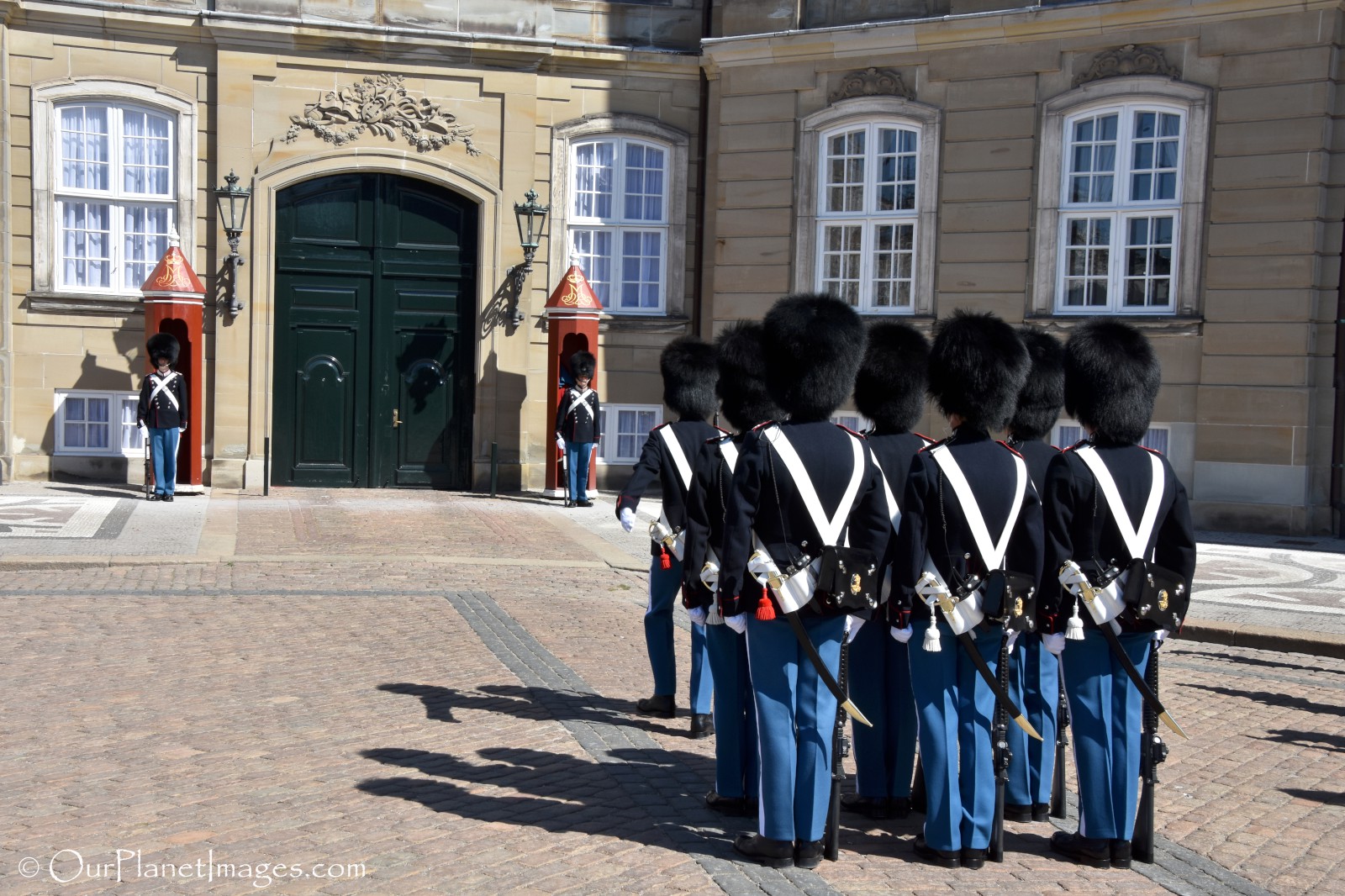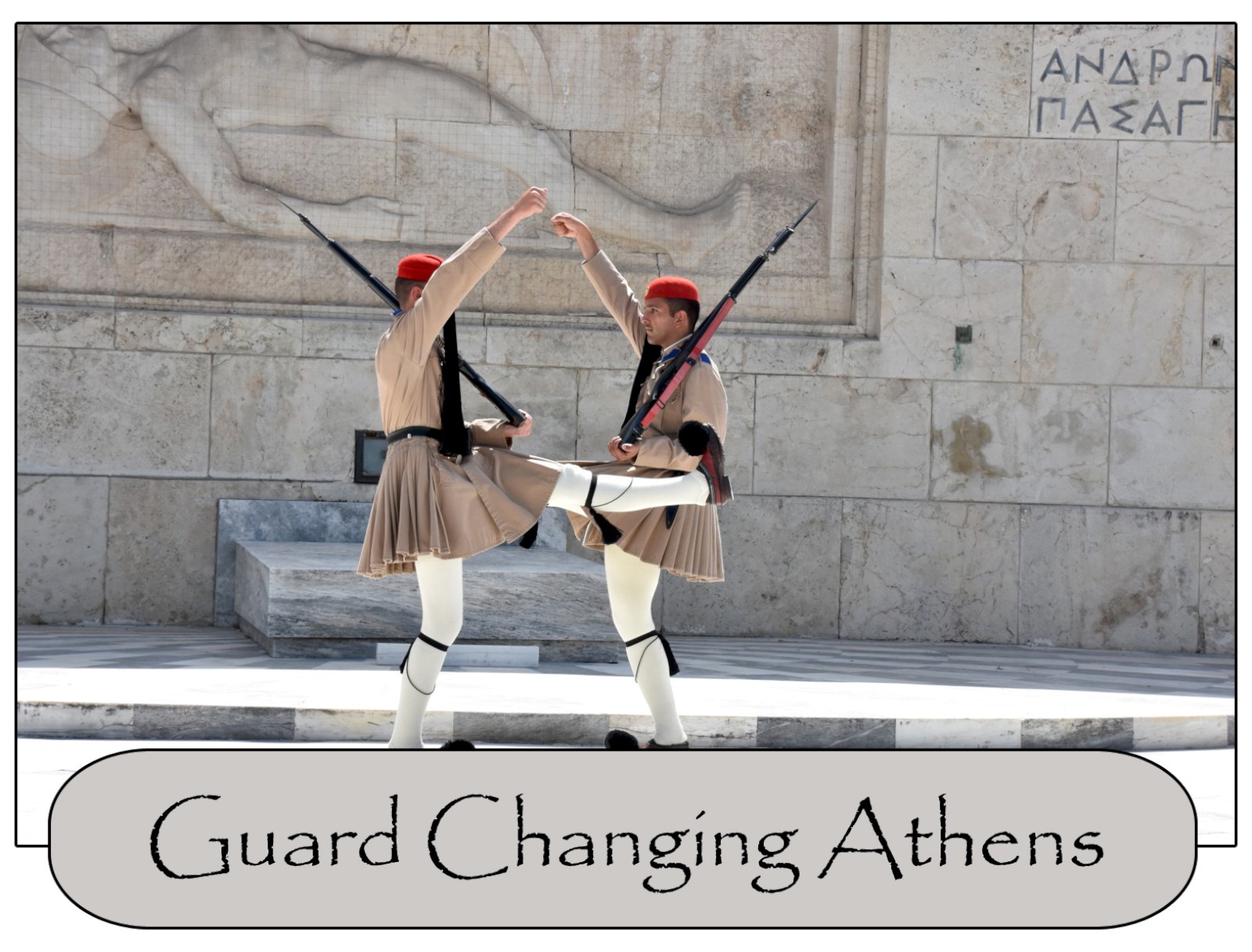The historical roots of the Royal Life Guards dates back to 1658.
The Royal Life Guards are stationed in two separate locations at Amalienborg Palace, the royal residence in Copenhagen. The guards are always present at their posts and the changing of the guard ceremony takes palace daily at noon.
The replacement guards leave Rosenborg Castle at 11:30 AM and march into the circular courtyard in front of the palace to replace the on duty guards that are stationed on each side of the entrance doors.
Marching into the Courtyard
The Danish Royal Guard marches into Amalienborg Castle from Rosenborg Castle where they have been stationed since 1785. The parade of guards pass through the streets of Copenhagen on a route that is about 1.2 km. The procession attracts spectators and the guards arrive into the courtyard with curious onlookers following.
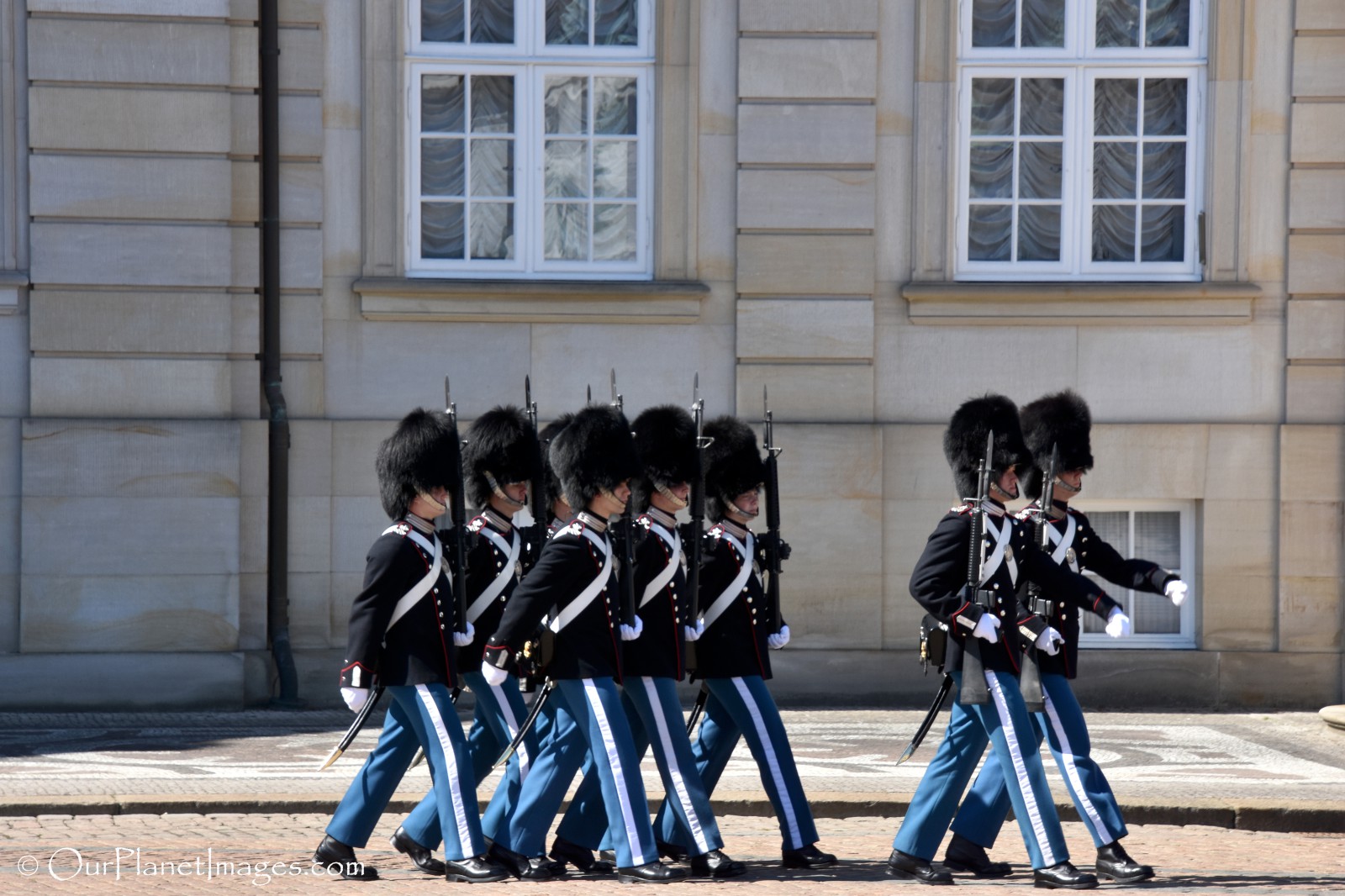
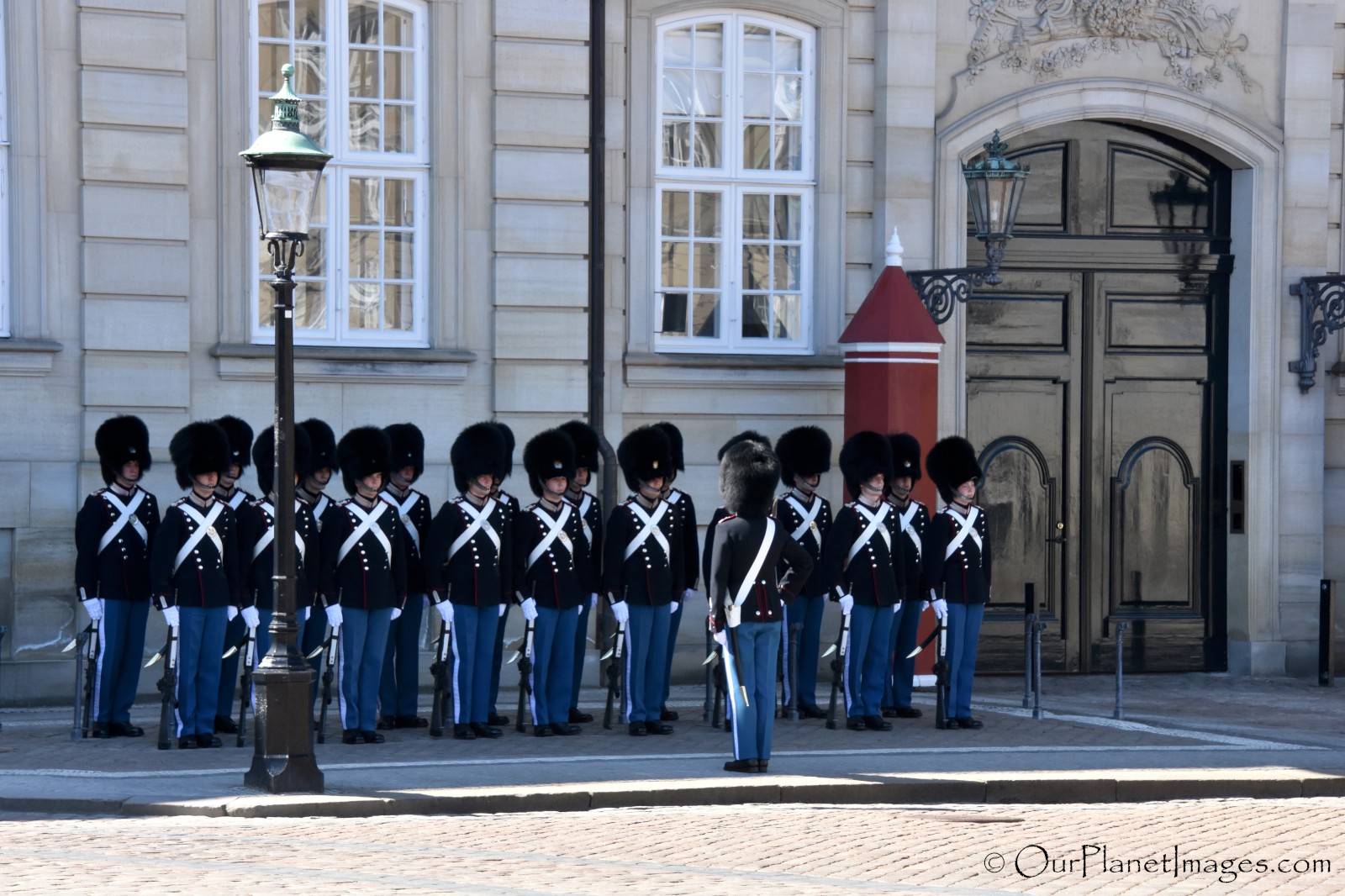
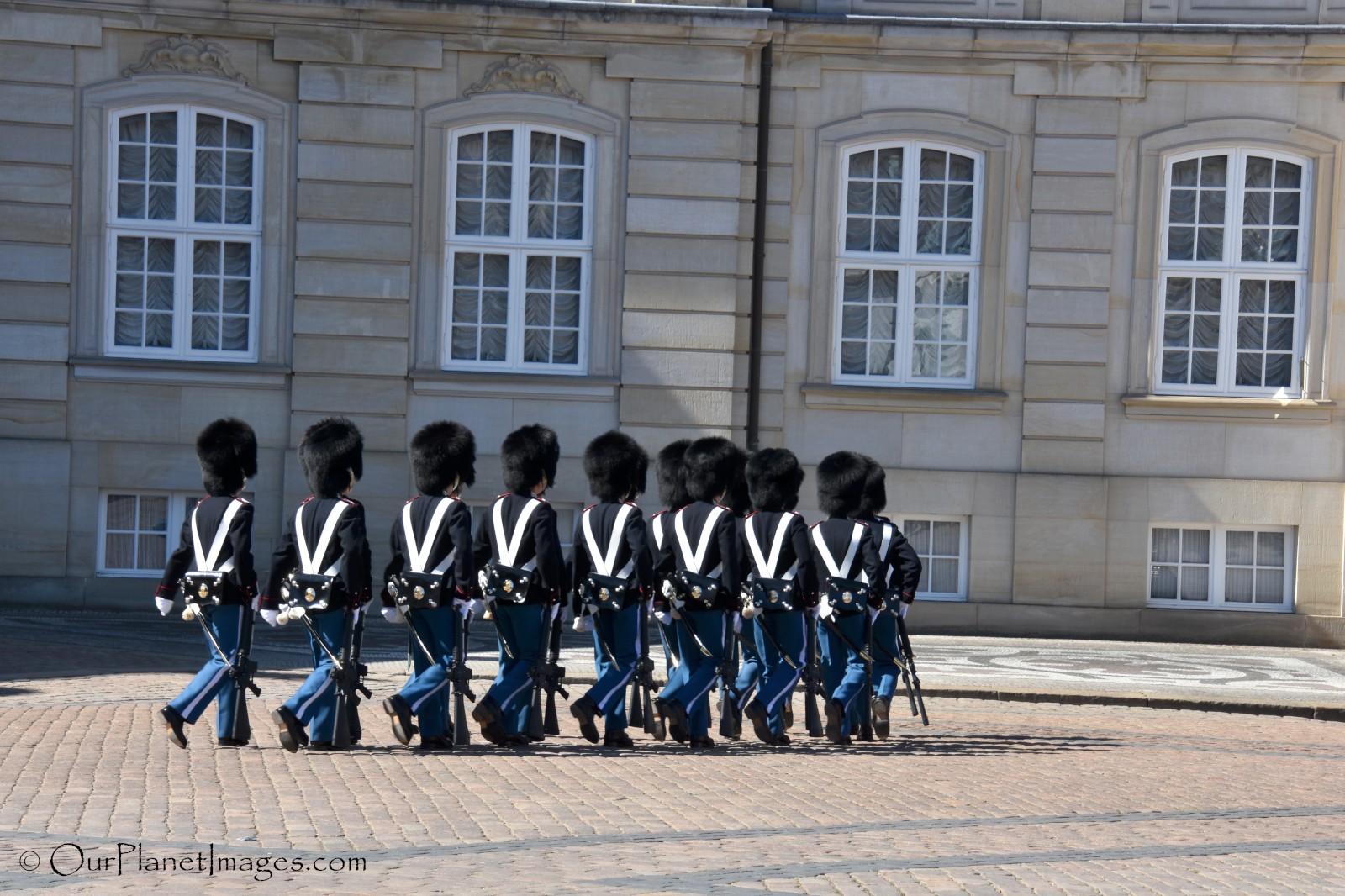
The Ceremony
The ceremony of the changing of the guard at Amalienborg Palace varies dependent on whether the royal family is in residence. The three different changing of the guard ceremonies that take place at Amalienborg Palace are:
- The King’s Watch ceremony takes place when the Monarch is in residence and the guards are accompanied by the Royal Guards musical band.
- The Lieutenant Watch ceremony takes place when Prince Henrik, Crown Prince Frederik or Prince Joachim are residing at Amalienborg Palace in the capacity of regents and the guards are accompanied by flutes and drums.
- The Manor Watch ceremony takes place when the Crown Prince or Prince Joachim are in residence but not in the capacity of regents or the Palace is uninhabited. This ceremony takes place without musical accompaniment
The ceremony that I watched was during a period when the palace was uninhabited.
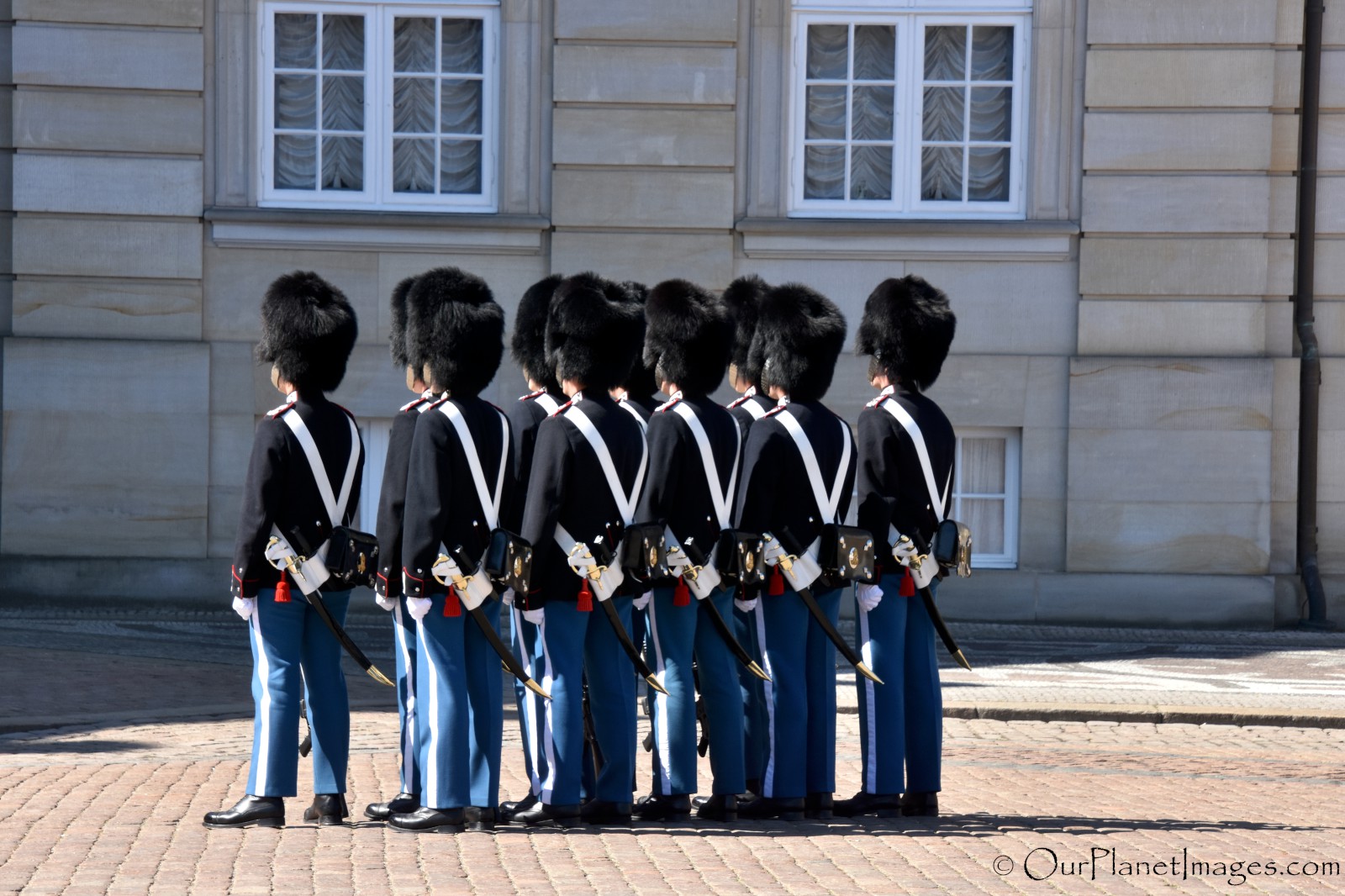
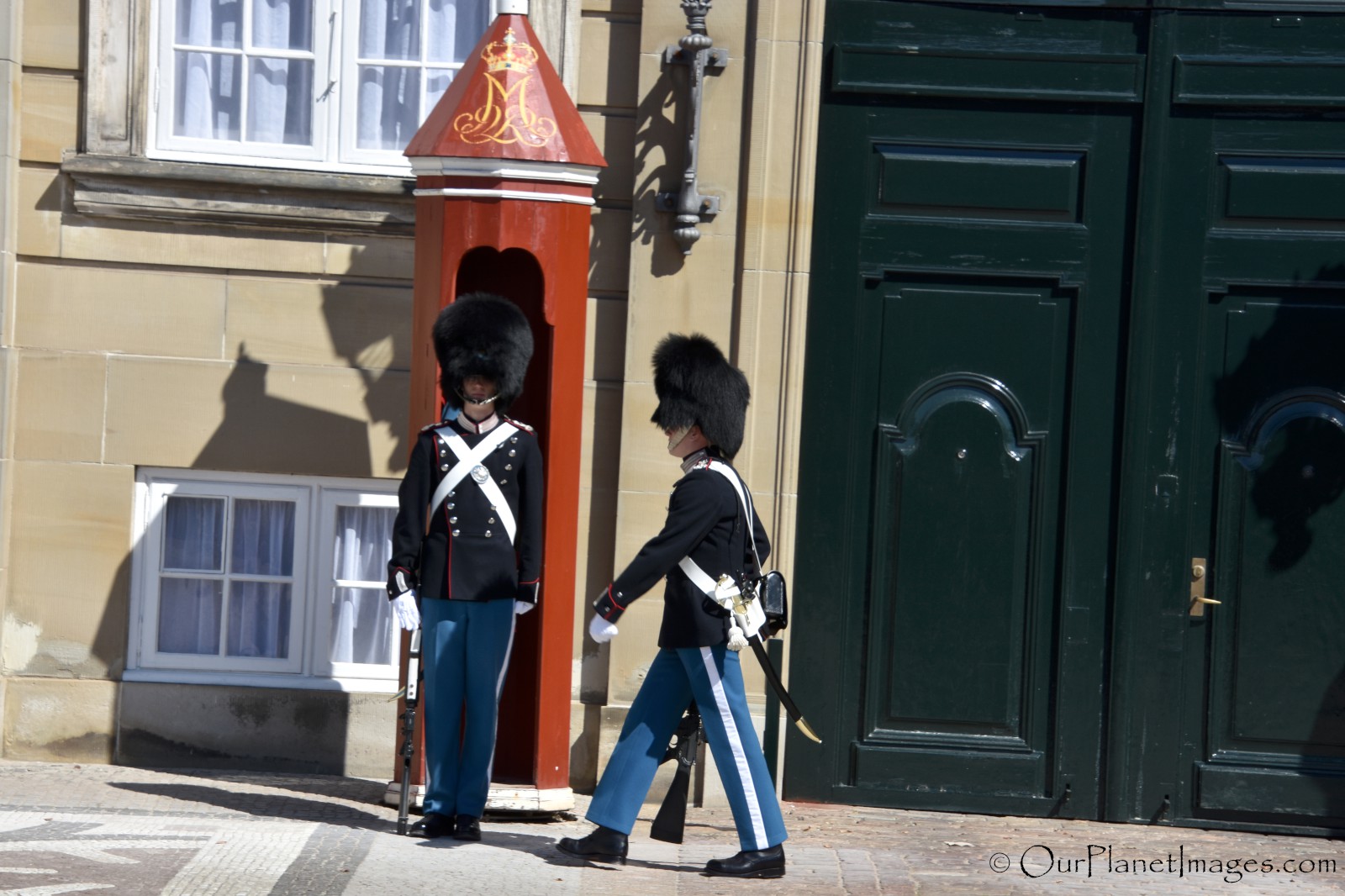
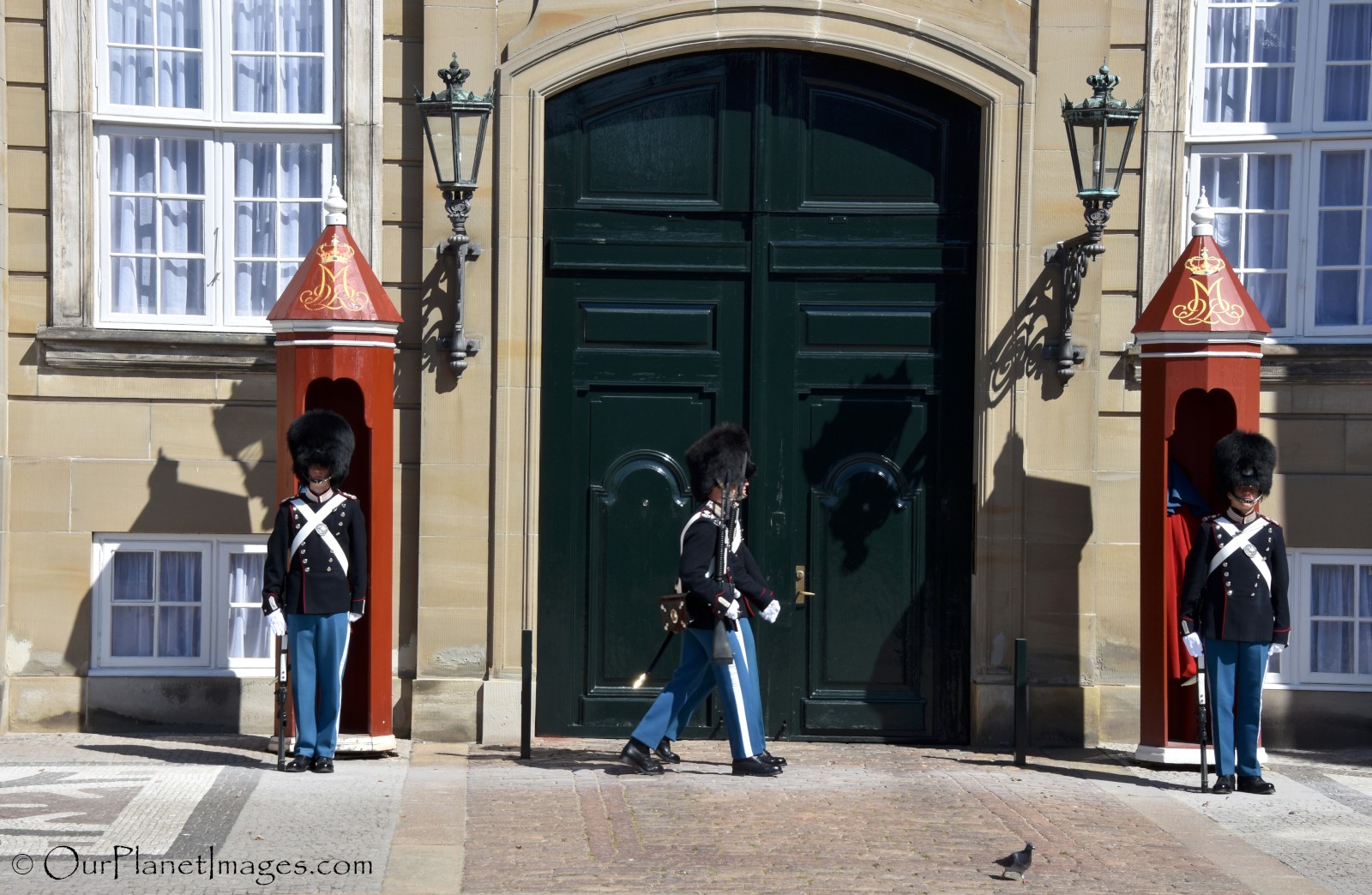
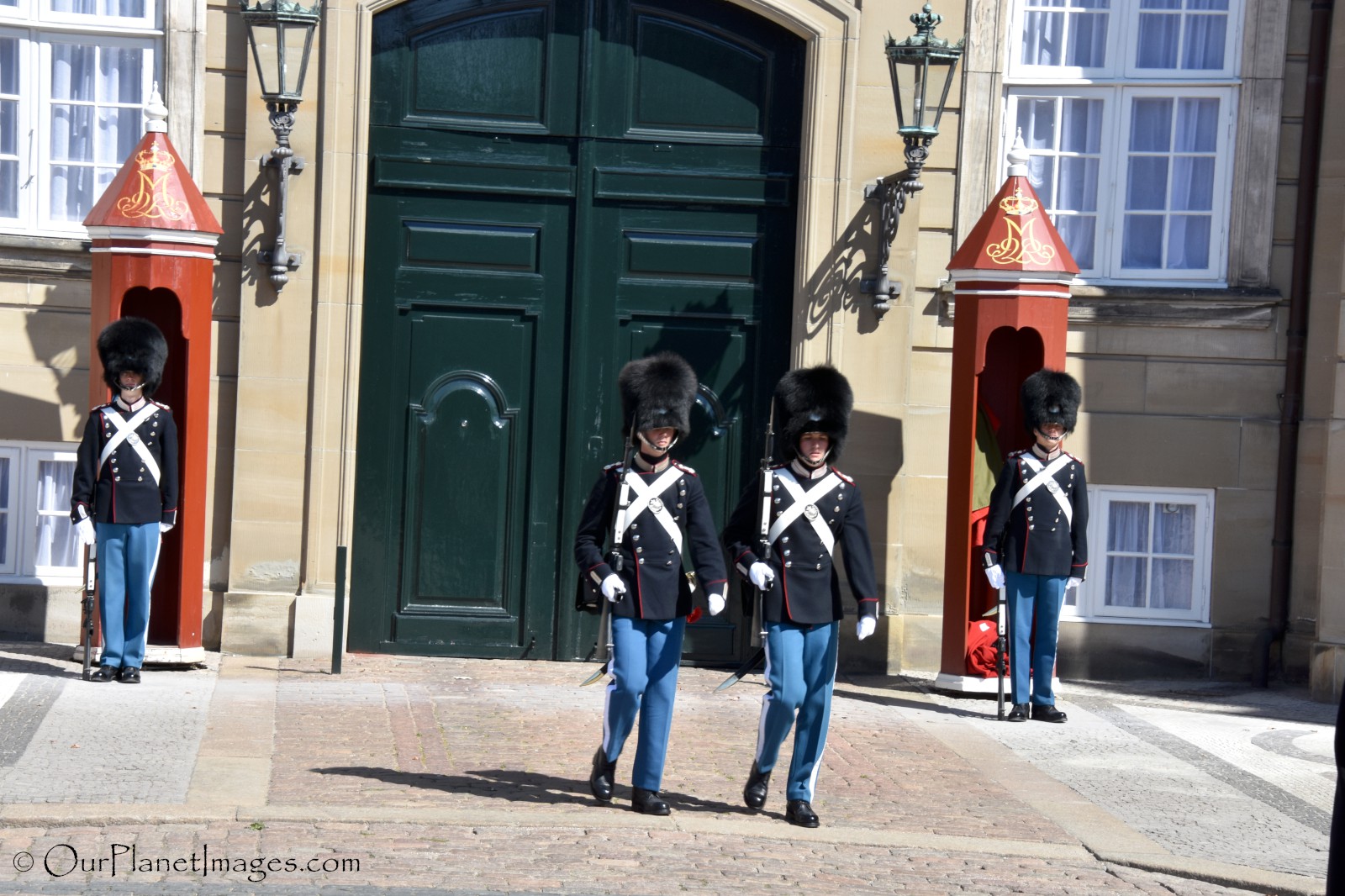
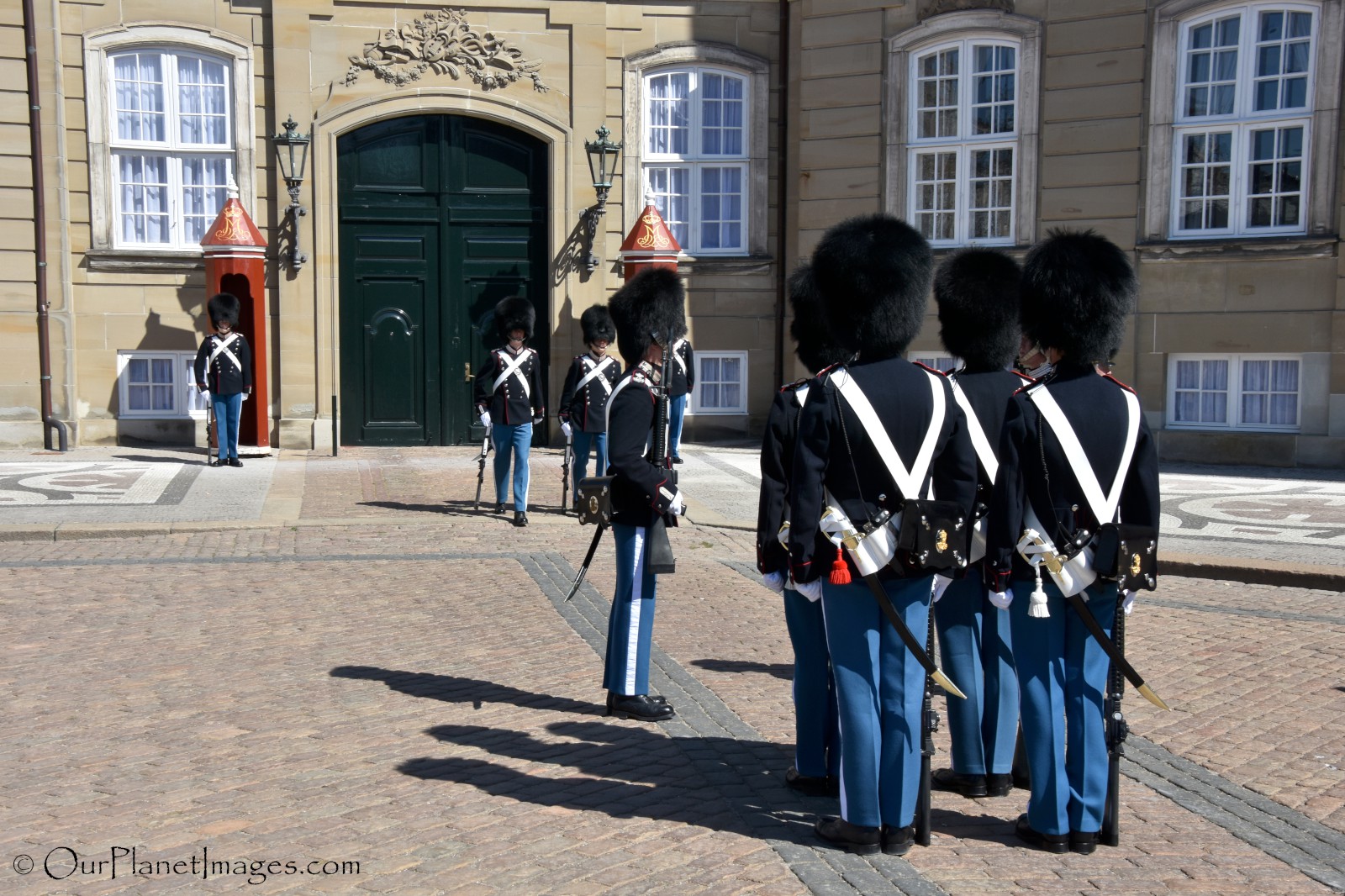
Exchanging of the guards
The actual exchanging of the guards is typical to most ceremonies. The replacement guard arrives accompanied with another guard. The on duty guards and replacement guards then face each other and they do a synchronized routine. The replaced guard and the accompanying guard leave and the new guard stands at his post.
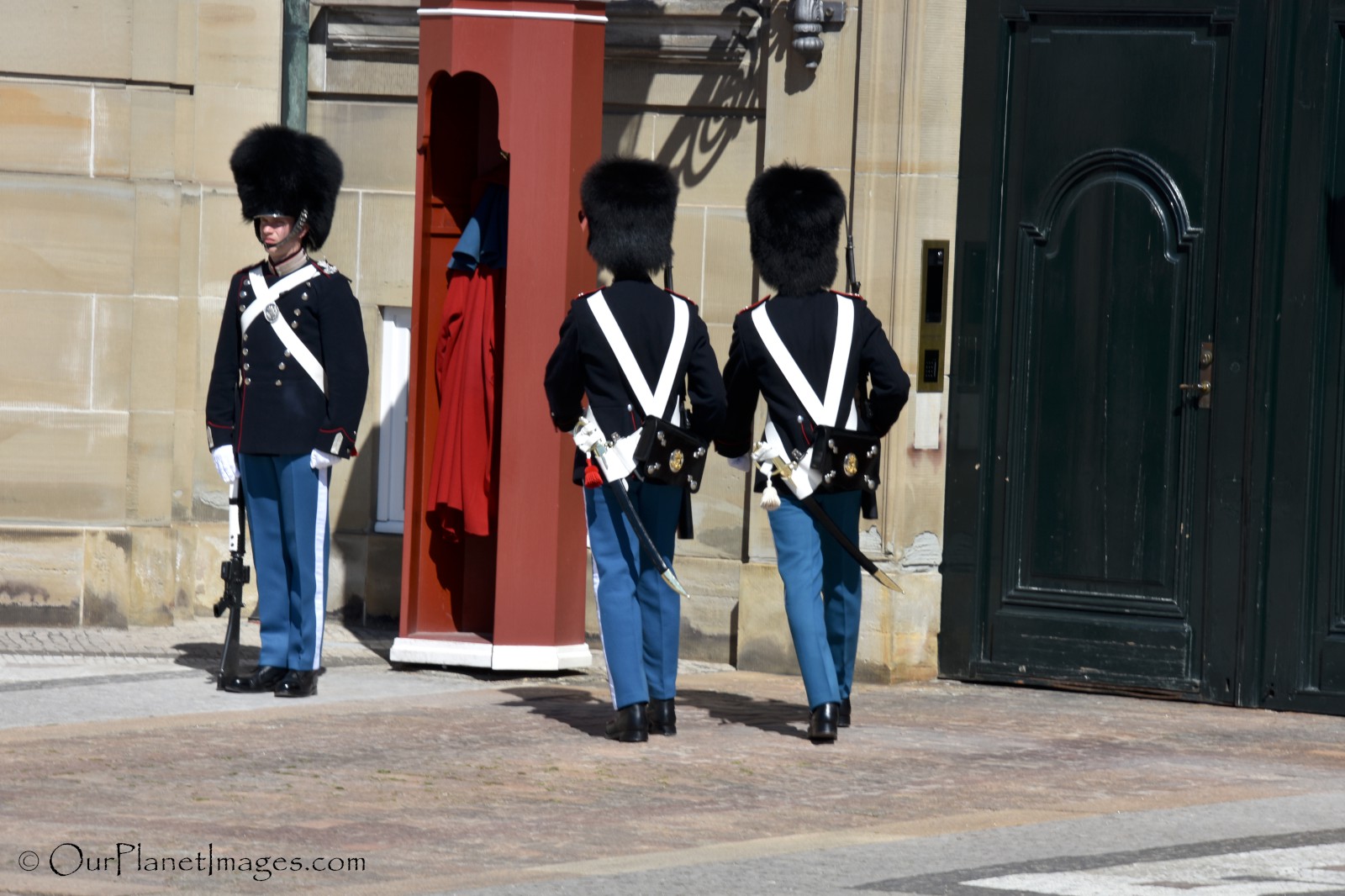
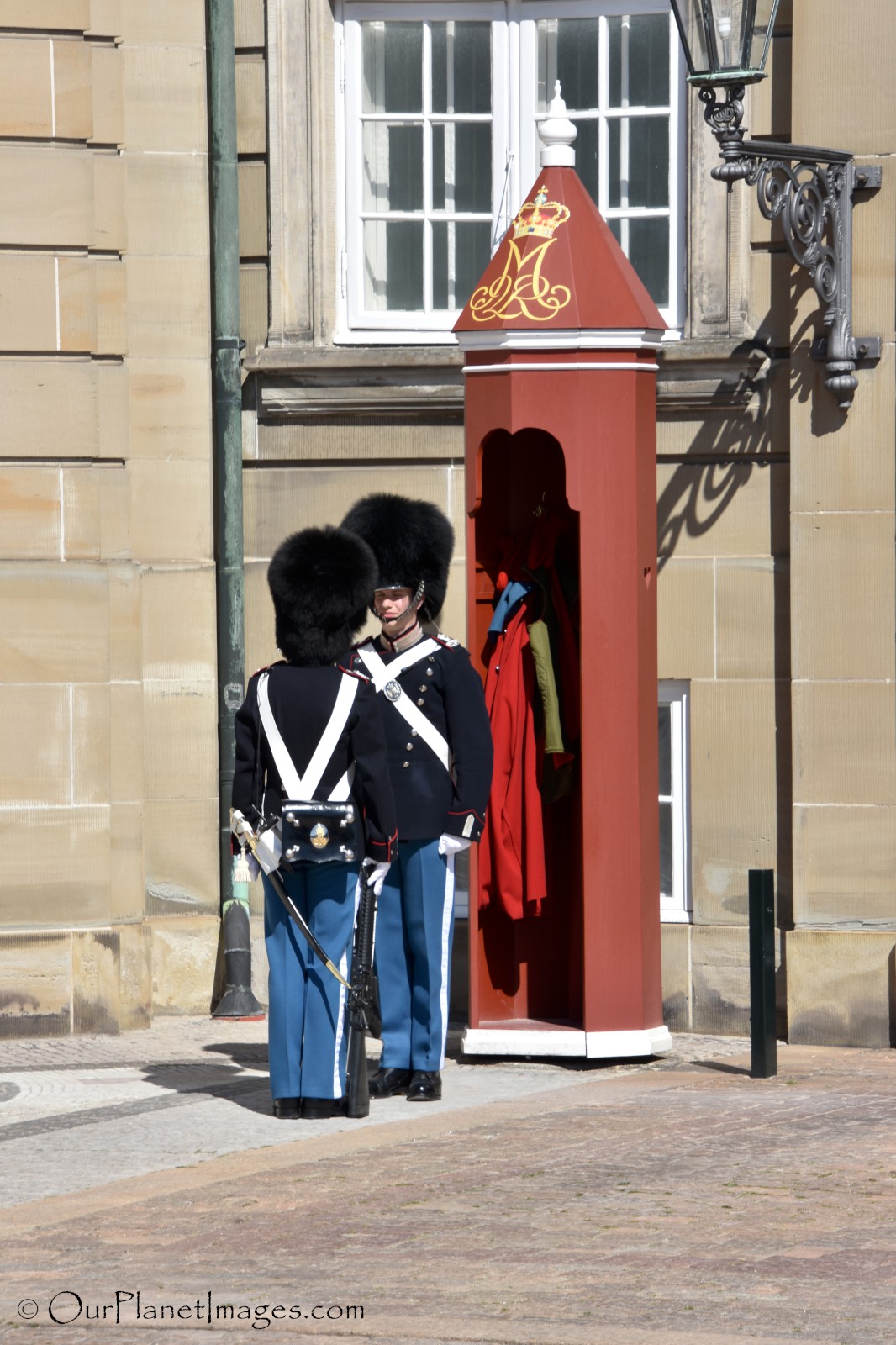
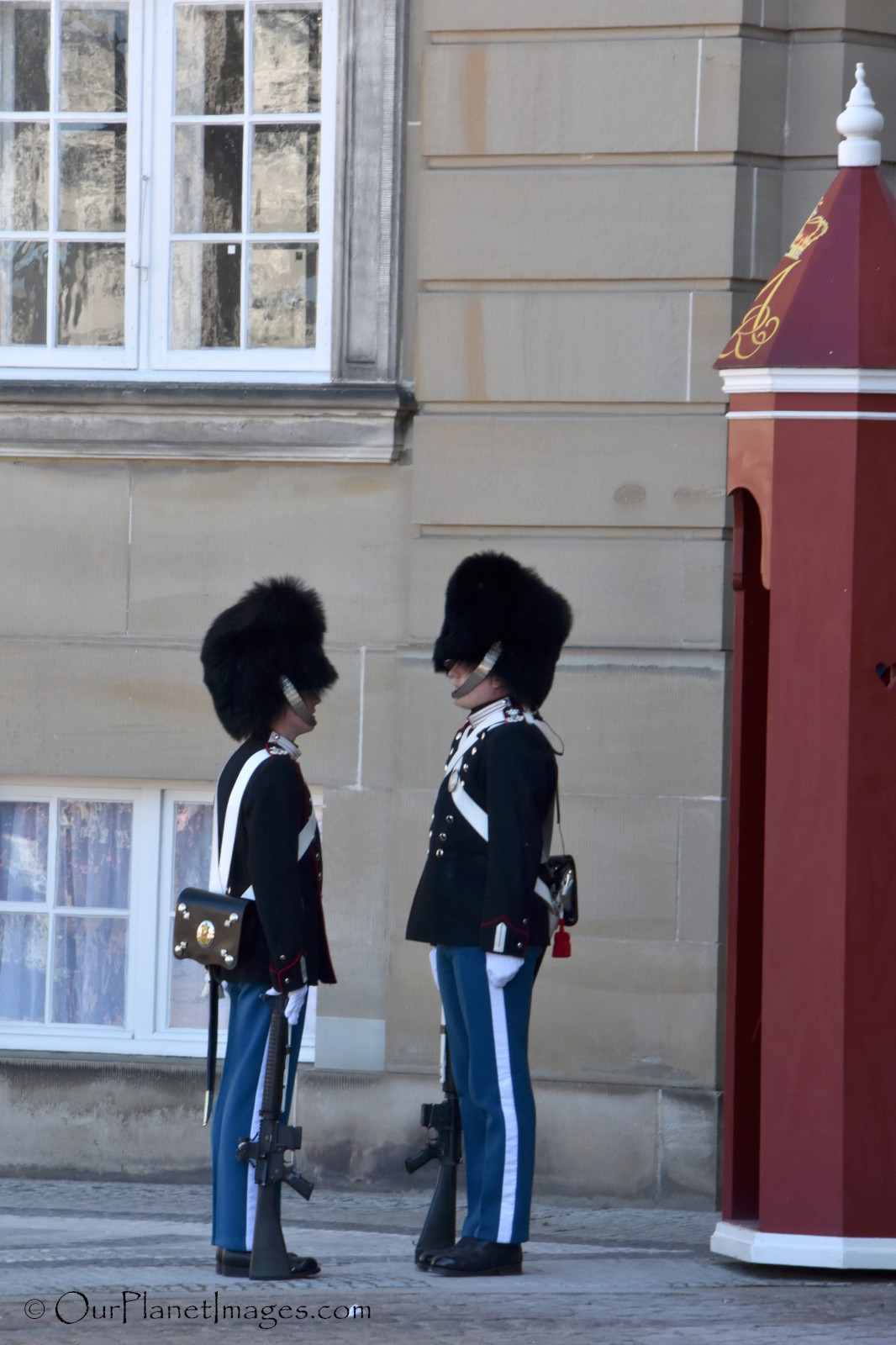
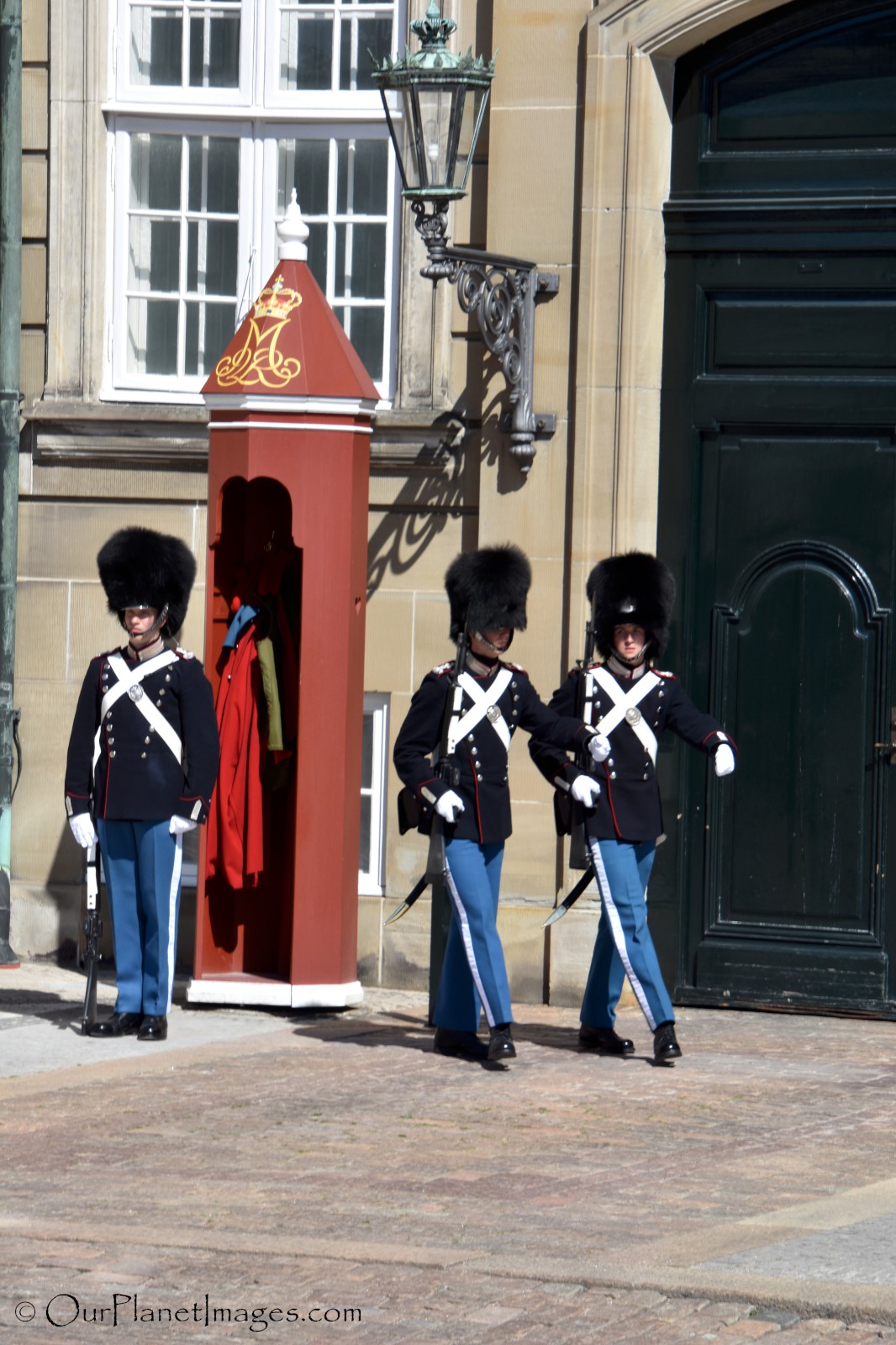
March out
When both guards at both locations have been replaced the lead guard and other guards then marches off with the replaced guards and the ceremony is complete.
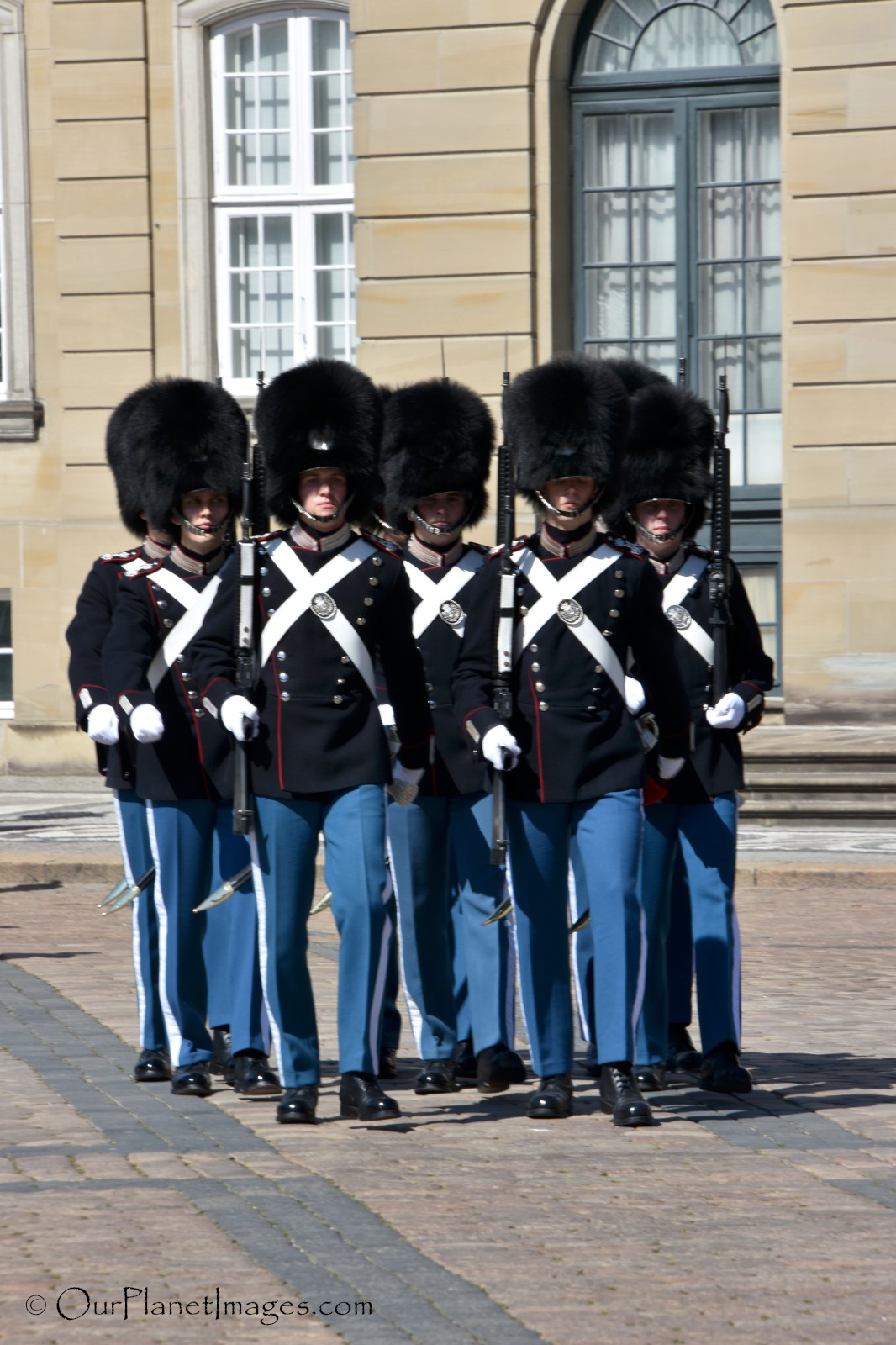
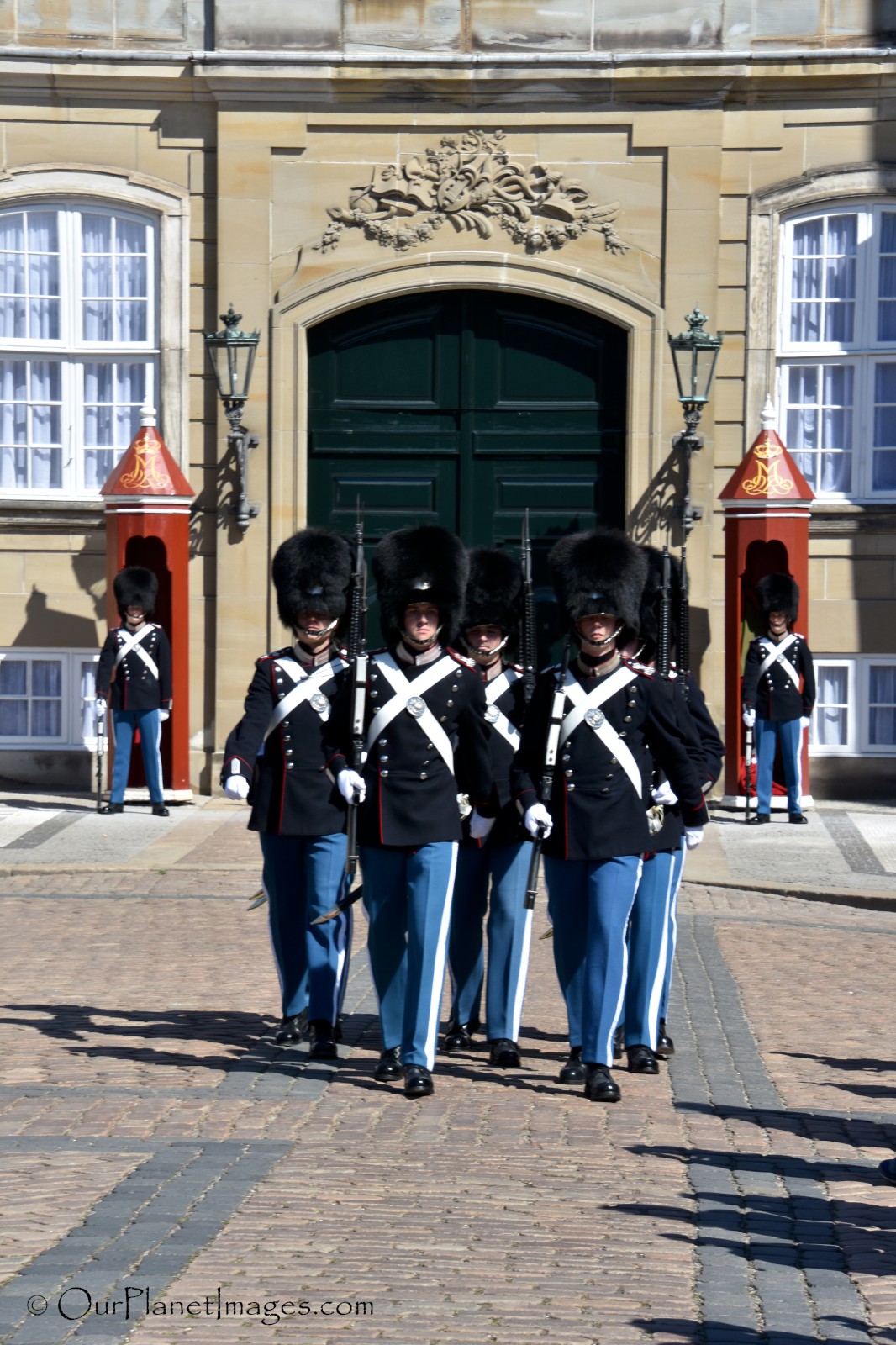
Standing Guard
The on-duty guards stand at their post in front of the shield houses which have been in their present form since 1740. Periodically, the guards pass back and forth in front of the entrance door but they resume their post at guarding position.
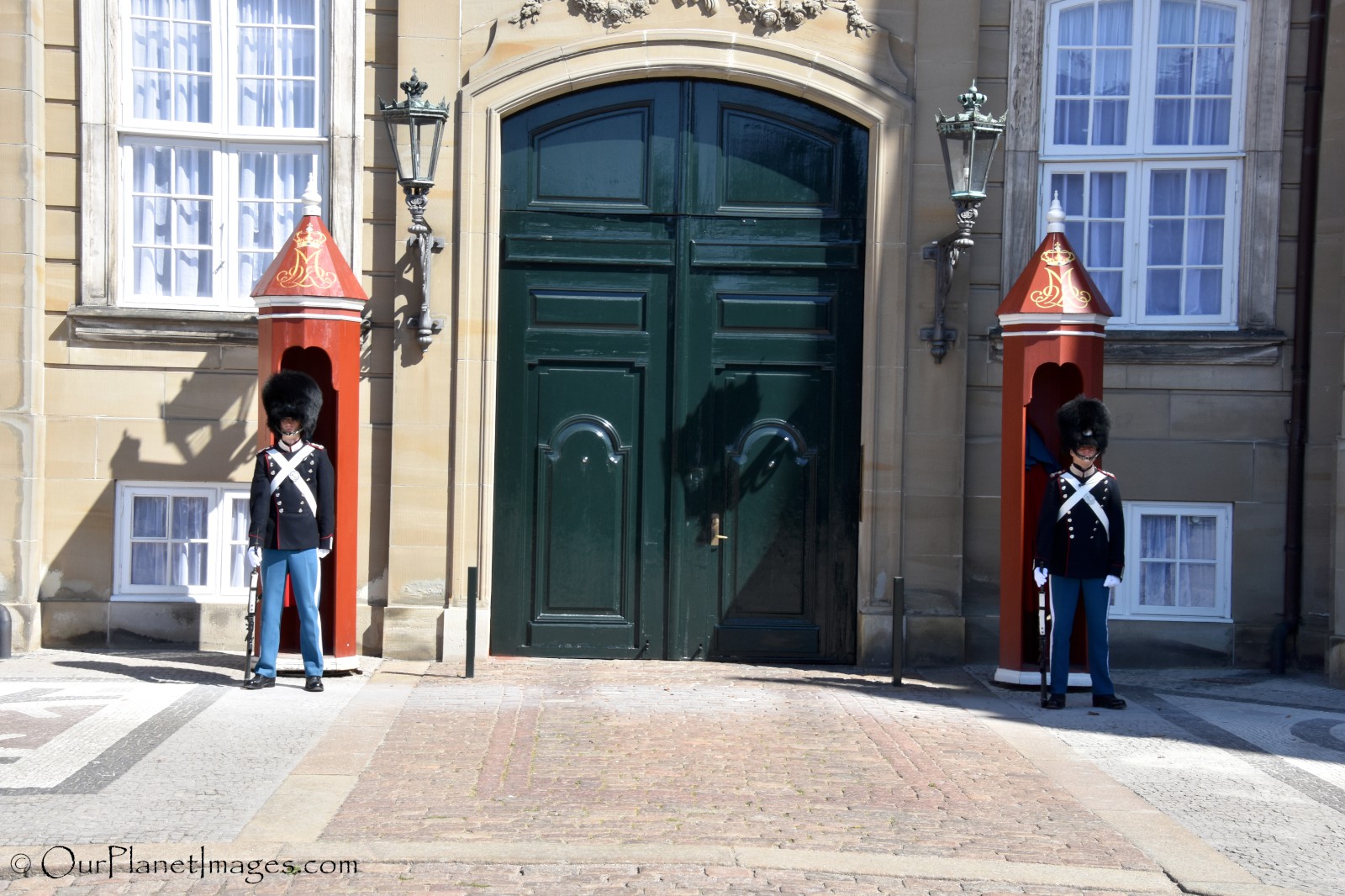

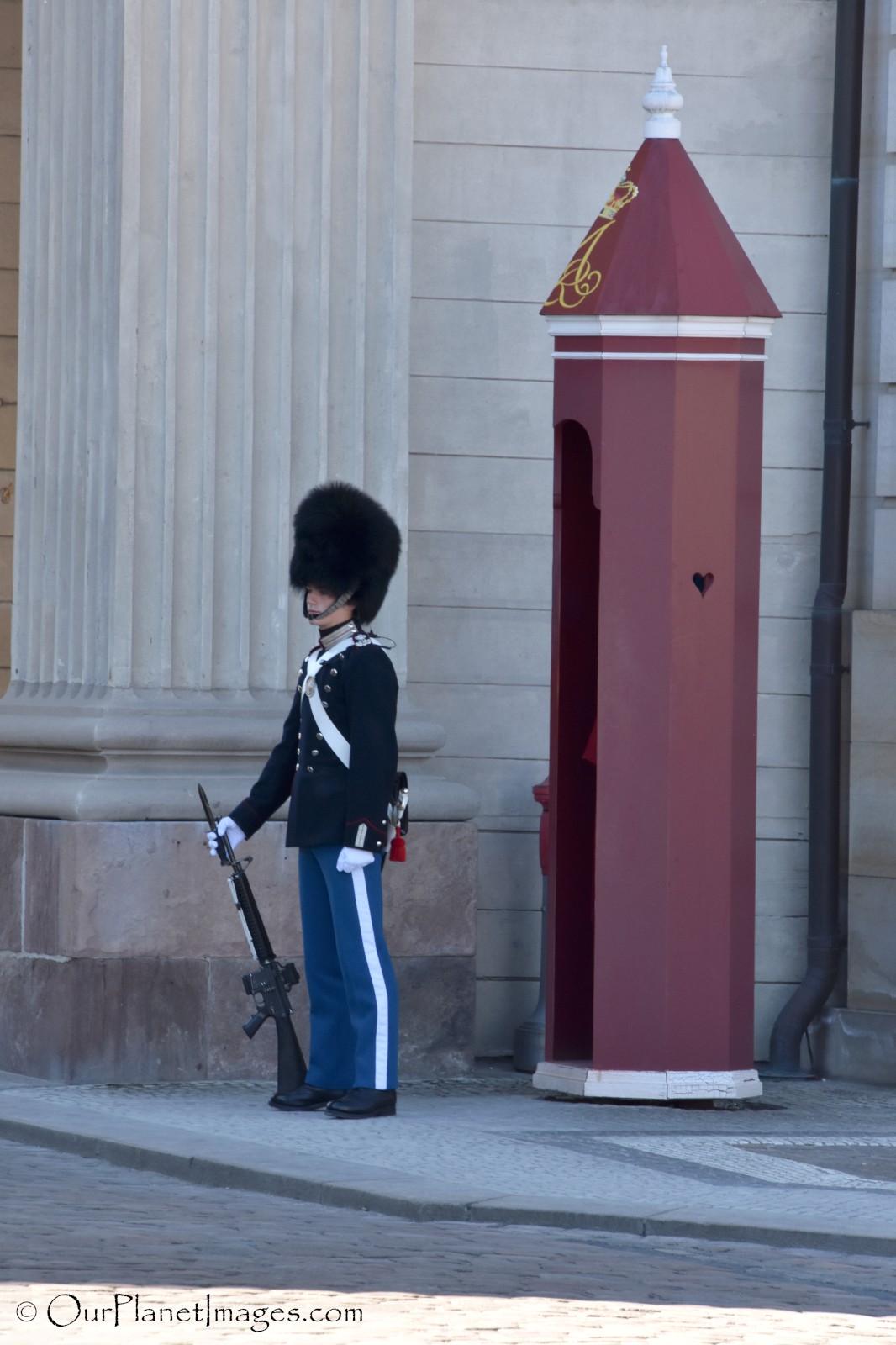
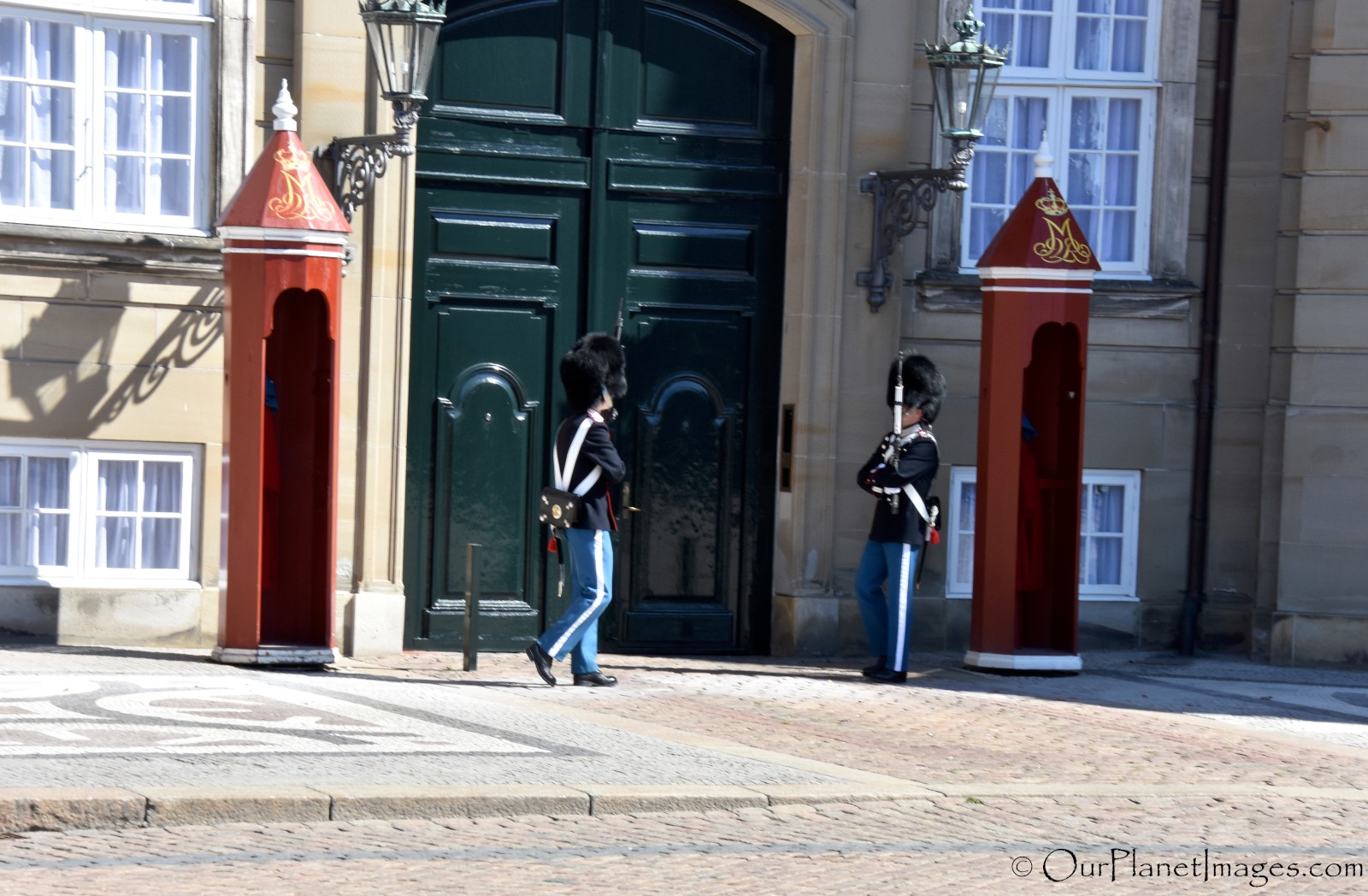
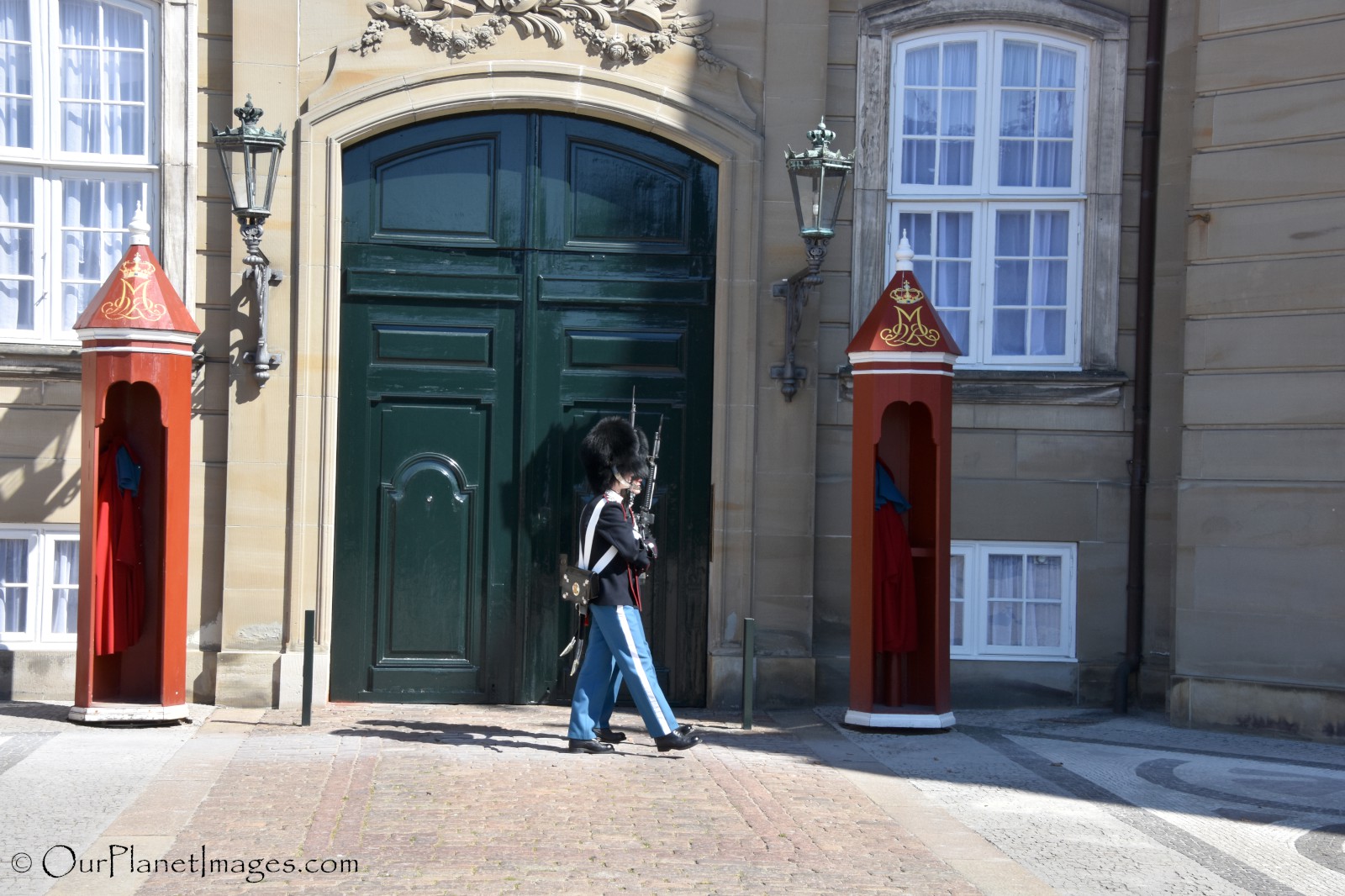
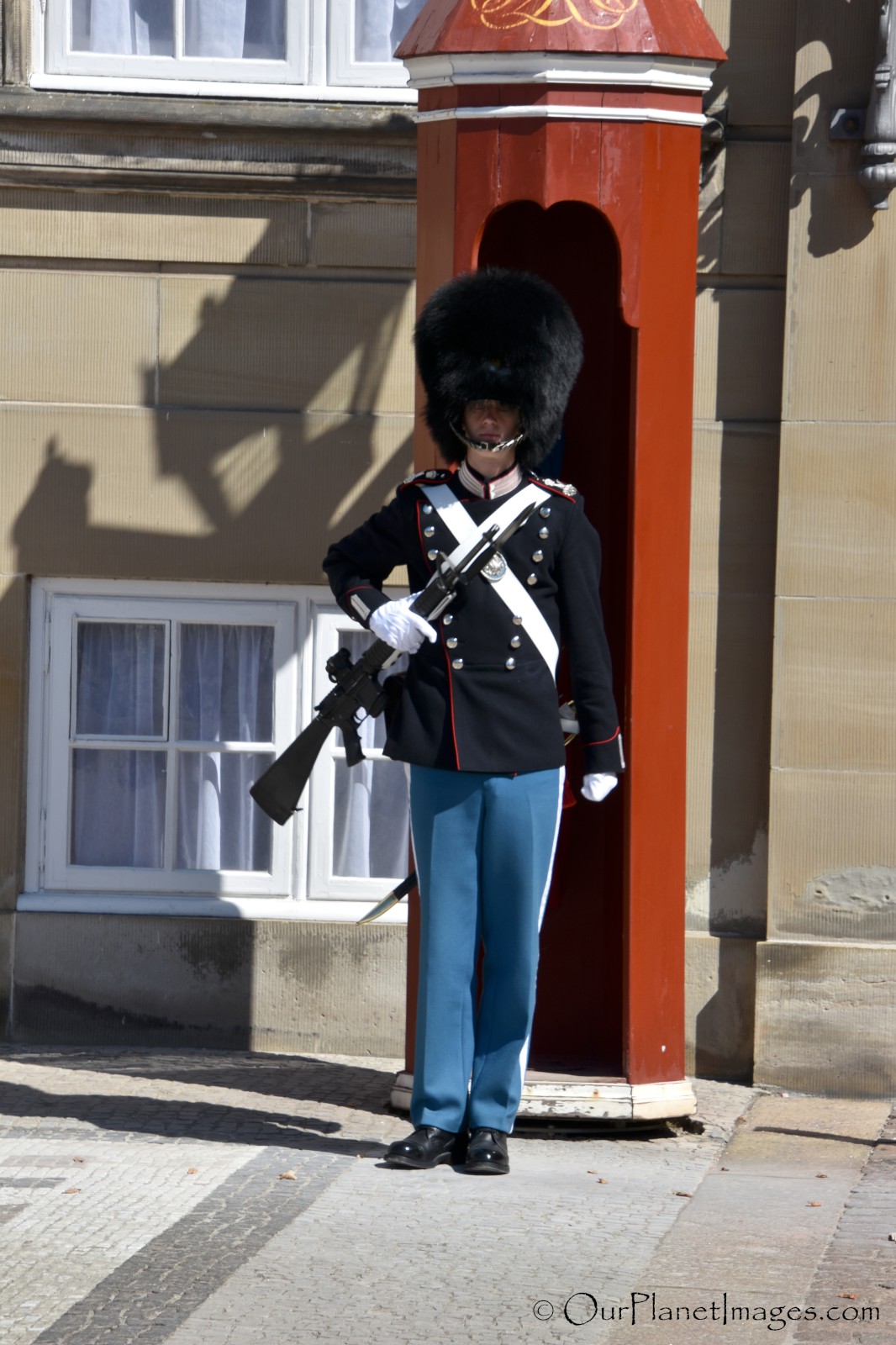
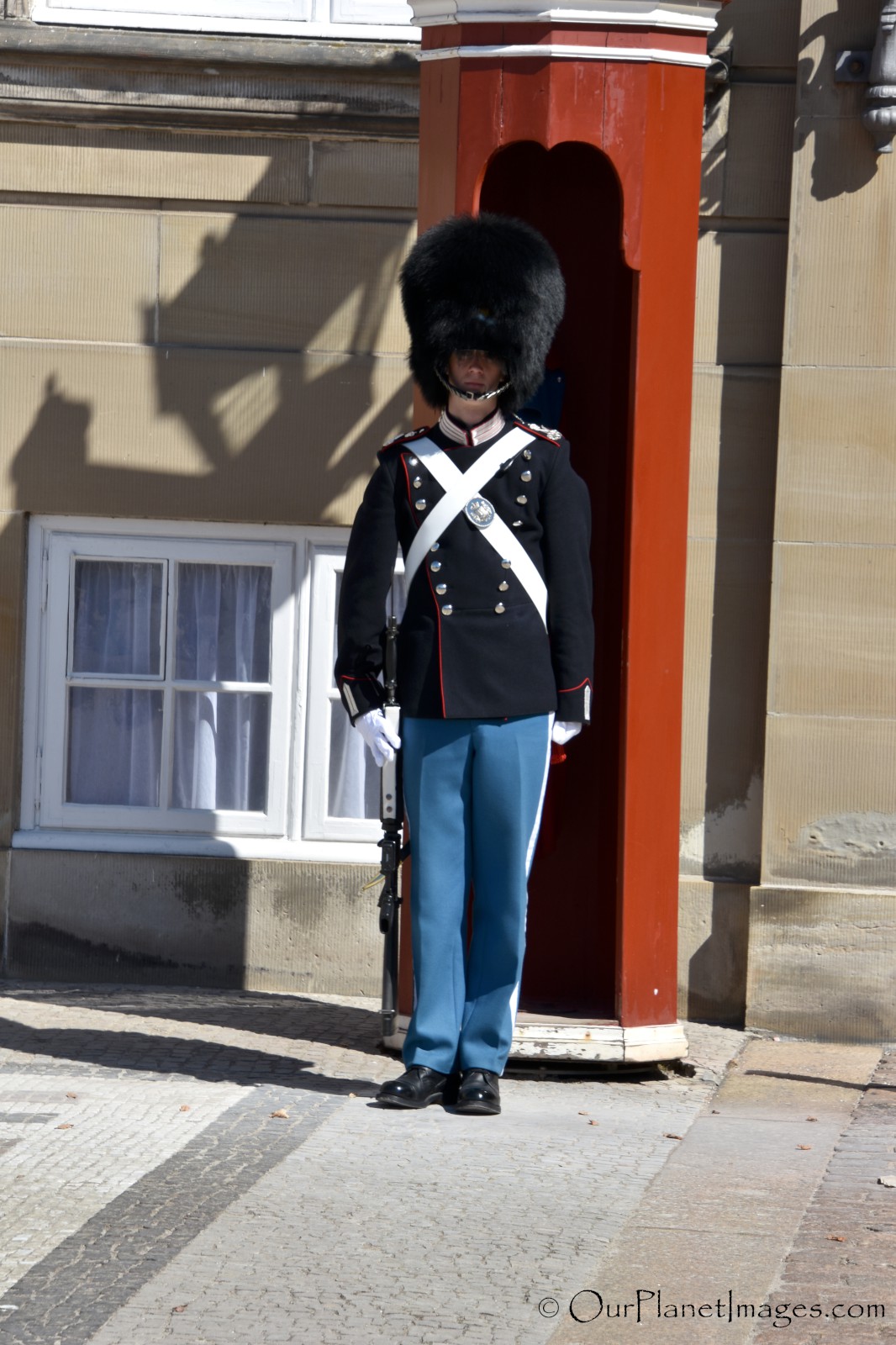
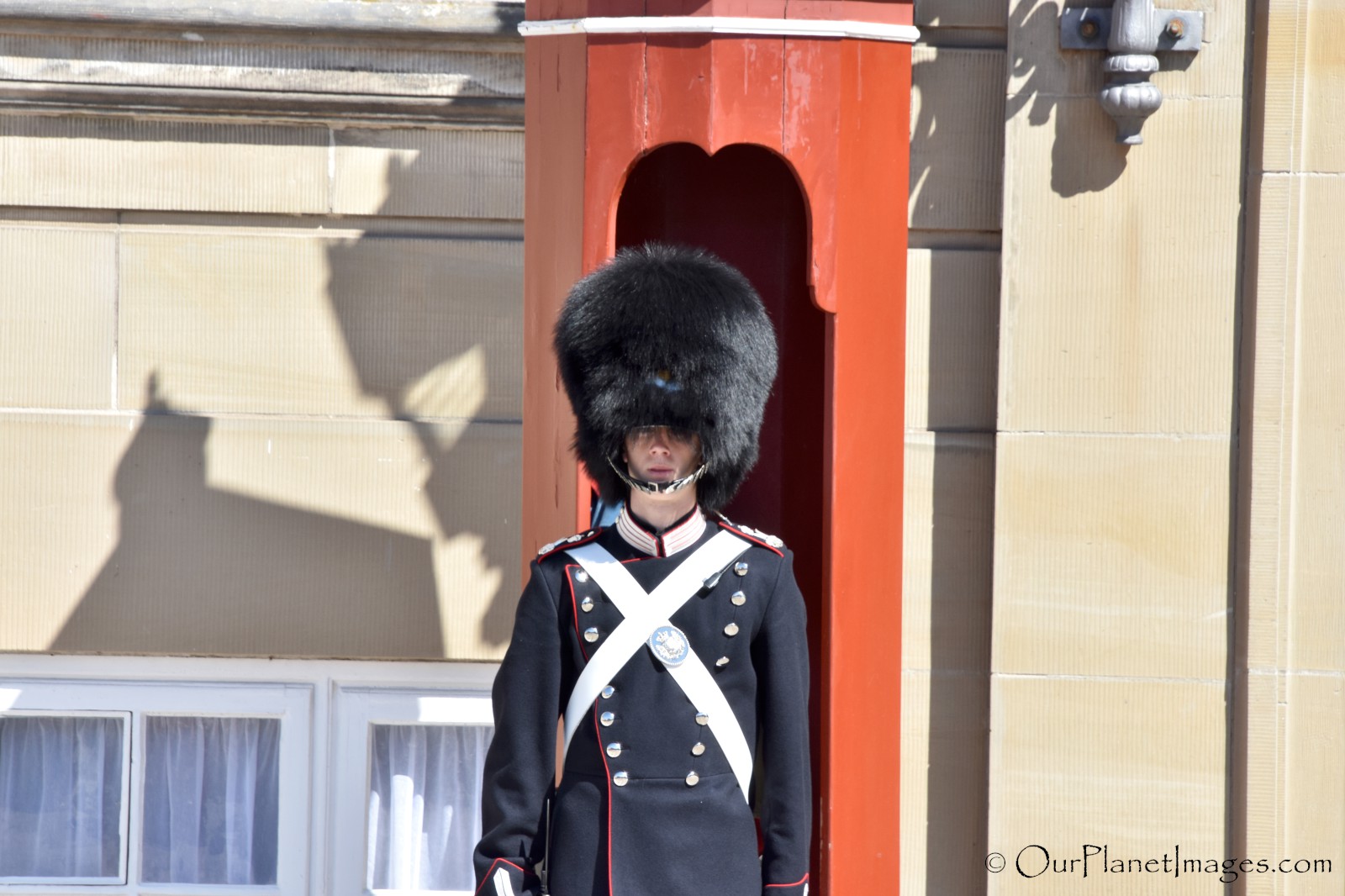
Guards Uniforms
The uniforms of the Life Guards with their bearskin cap have evolved over 300 years. The distinctive blue pants have been part of the uniform since 1822.
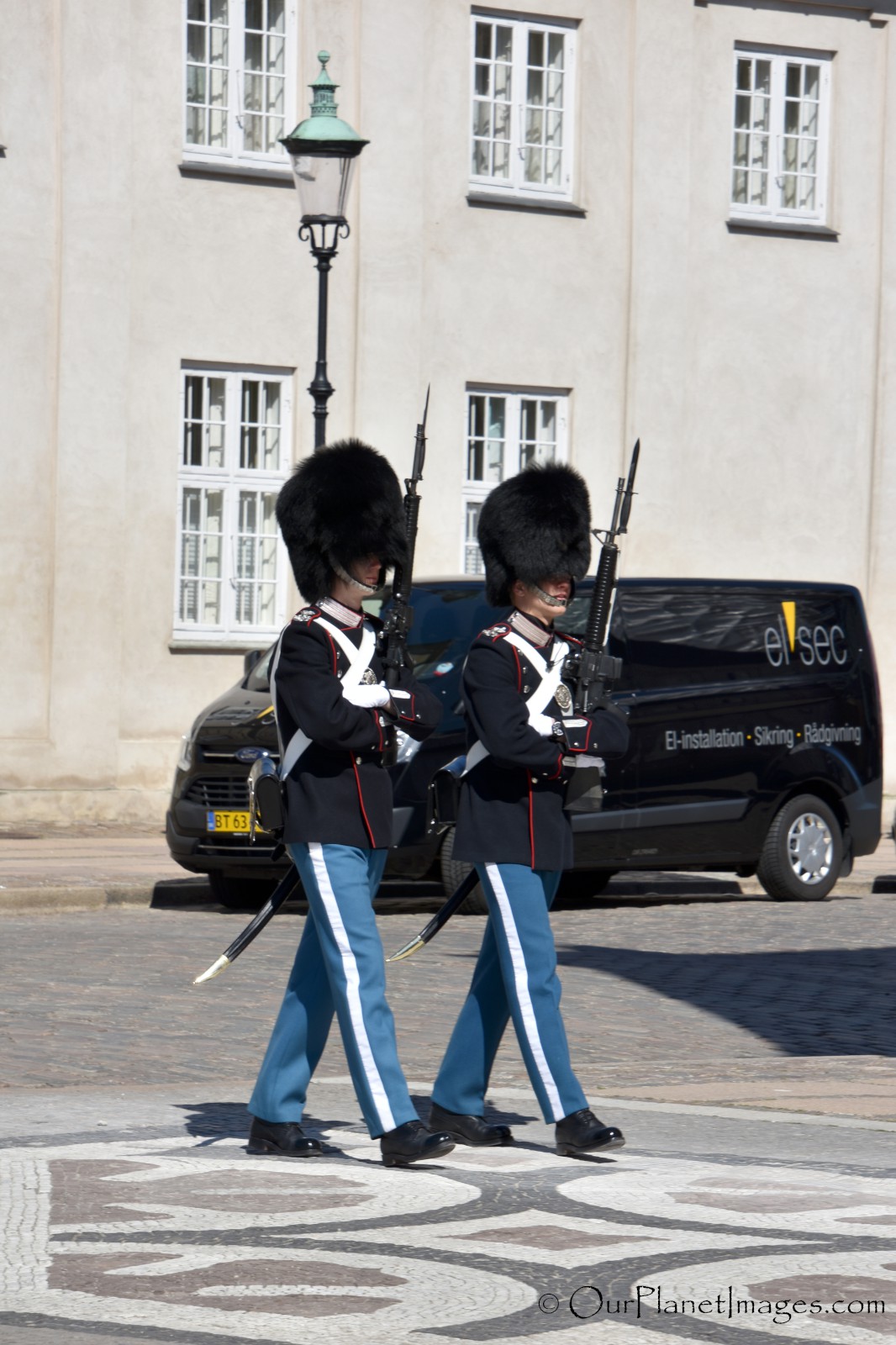
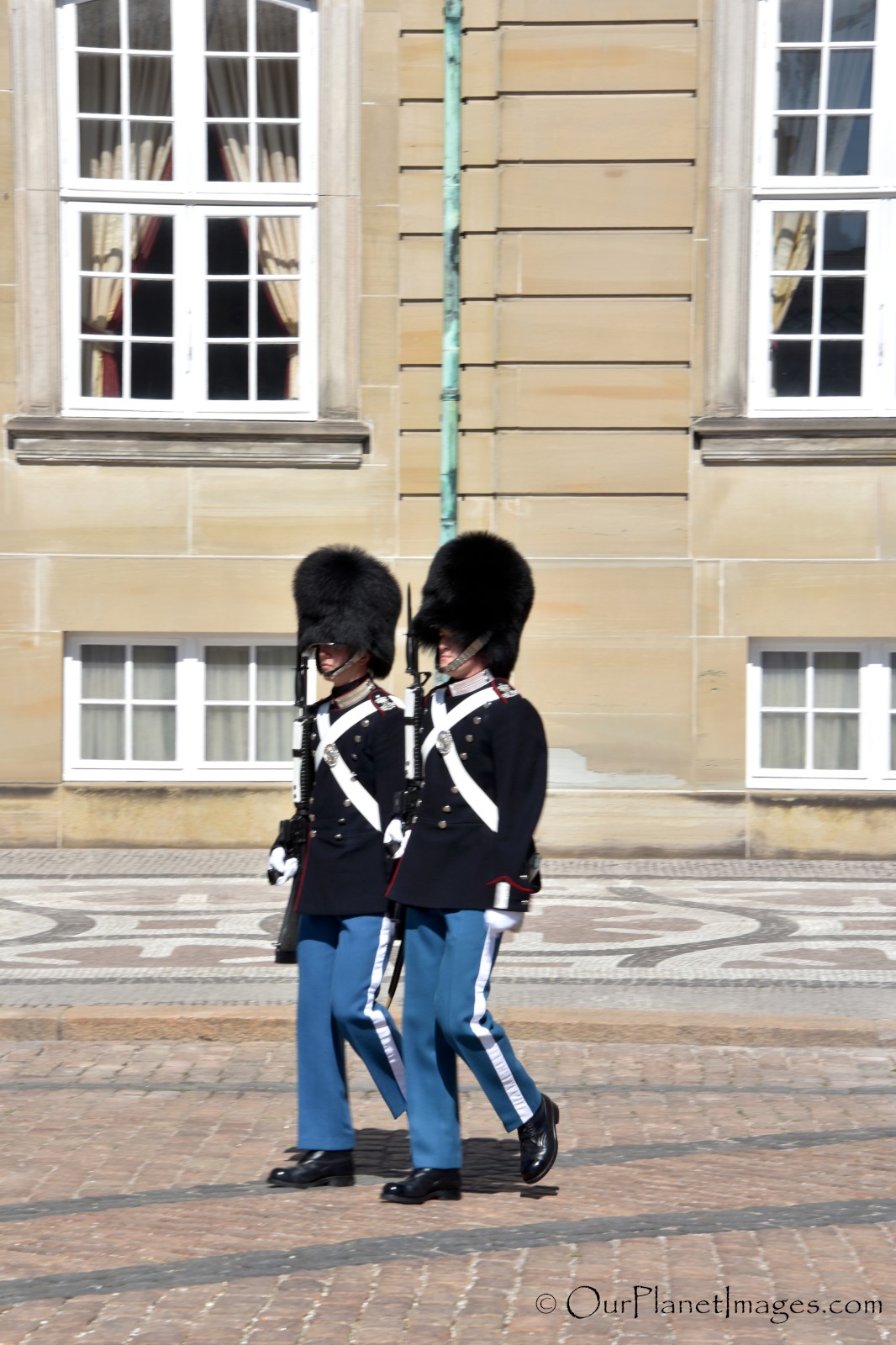
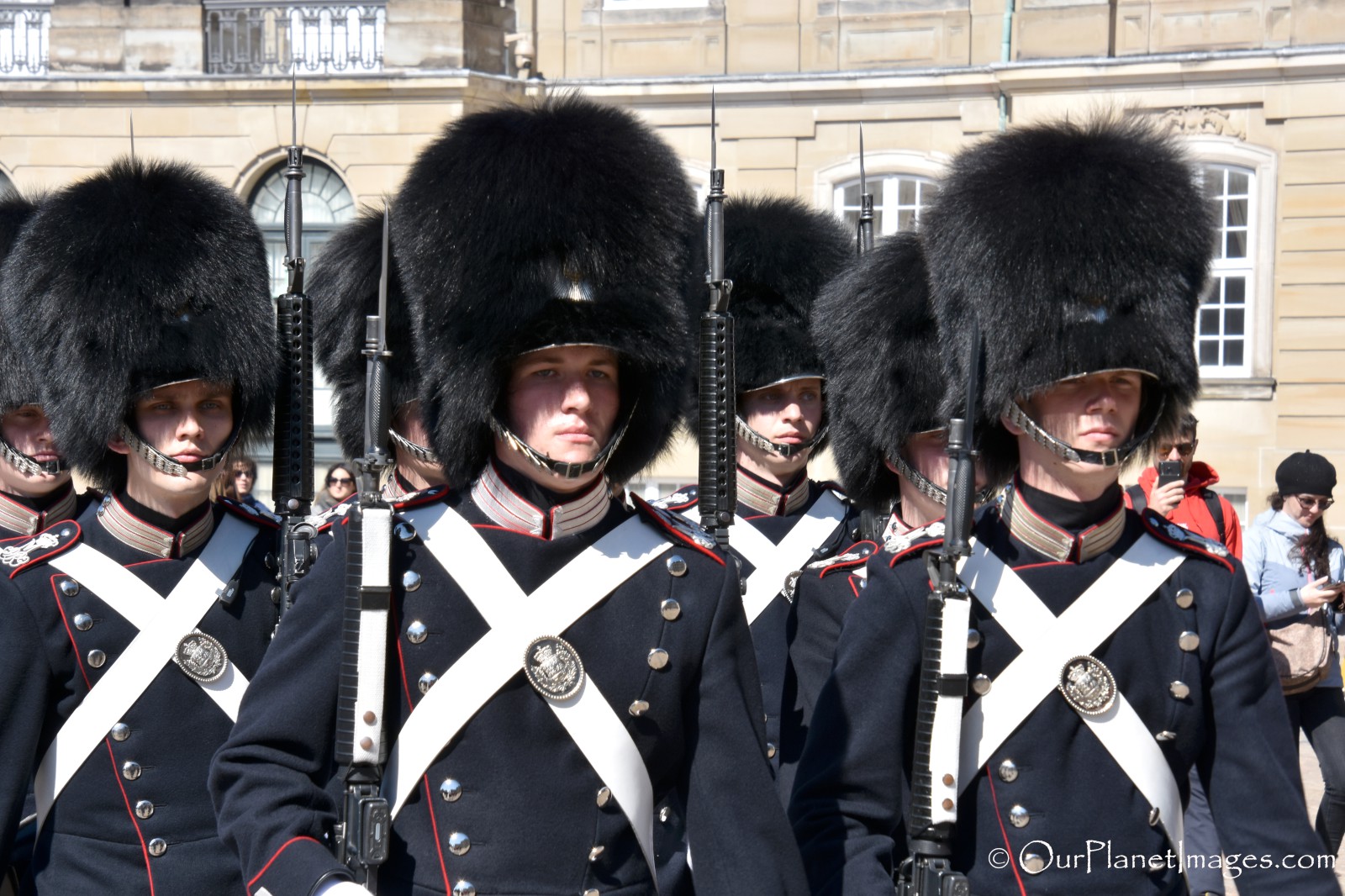
When to go
The Amalienborg Palace is the winter home of the Danish royal family, from September through April. During this time it is possible to see a full changing of the King’s Watch or the Lieutenant Watch ceremonies. The rest of the year the Manor Watch ceremony normally takes place.
The Dust on My Shoes
Changing of the guard ceremonies are common but there are only a few places around the world where they can actually be watched. I always make an effort to see a changing of the guard ceremony whenever I travel to a city where there is a ceremony.
The changing of the guard at Amalienborg Palace is easy to watch and people are free to move around but police are near the guards to make sure that the bystanders keep a safe distance from the guards.
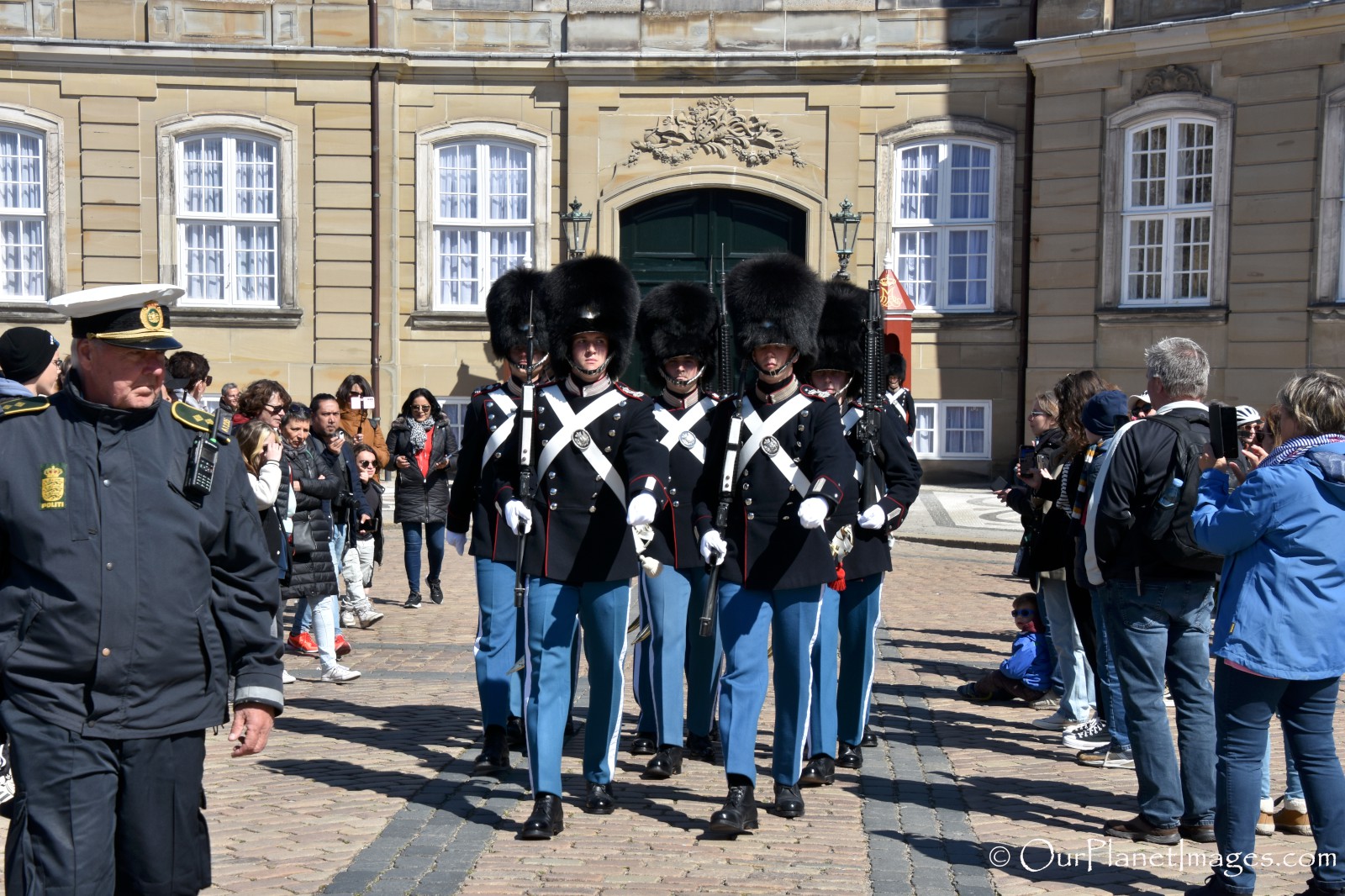
All changing of the guard ceremonies have the same purpose but each ceremony is different. Some ceremonies are small and seem reverent and other ceremonies involve a parade with a marching band that seem like a celebration. Each ceremony that I have attended has been different, the guard’s uniforms represent the country’s military history and the ceremony normally has traditions that have been passed down for many years.
You may think there is no need to see another changing of the guard ceremony when you have already seen a changing of the guard ceremony but many ceremonies are vastly different. I feel like they are a reflection of the culture of the country and they are an easy way to have a cultural experience when traveling.
